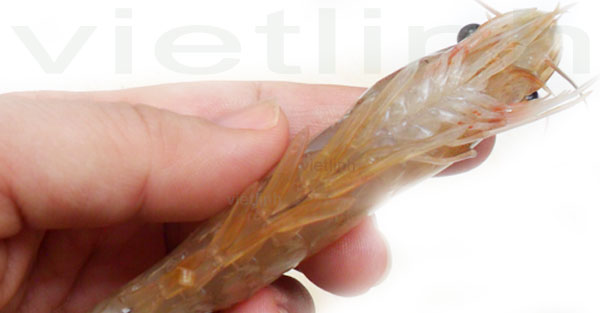2.5.8. Taura syndrome - TSV (Taura syndrome in Penaeus vannamei)
- Taura syndrome is also called the "red tail" disease.
- When shrimp has this disease, its body and other parts have the color of red or black pink. Shrimp is lazy eating and lethally swimming on water surface or edges of farming ponds.
- Shrimp hepatopancreas is more yellow than usual with swelling gill. Shrimp usually dies during moulting period.
- The disease is dangerous for shrimp. Its incubation period is short, but can cause 95% deaths in shrimp. Shrimp dies or sinks at the bottoms of farming ponds, then floats after 2-3 days later. There are many dead shrimps around ponds’ edges.
- The disease is caused by a combination of pathogens, including Vibrio harveae and 3 other viruses.
- Taura syndrome appears when shrimp is about 2 weeks old until it reaches mature and molting stages. The disease is potentially acute, making shrimp sick, causing soft shell and destroying shrimp’s digestion. The syndrome diffuses and spreads quickly.
- In reality, it rarely appears only one disease in a farming pond. Shrimp may have different types of diseases at the same time, such as white spot syndrome in combination with yellow head; Taura syndrome with white spot syndrome, etc. When symptoms of 2 diseases appear at the same time, shrimp mortality happens much faster.
Source: Temporary process for safe brackish-water shrimp farming in areas affected by diseases in Vietnam. According to The Official Dispatch No. 10/TCTS-NTTS. January 6th, 2015. Vietnamese Directorate of Fisheries
Viet Linh 2015. Translated by Sonia Linh V.
